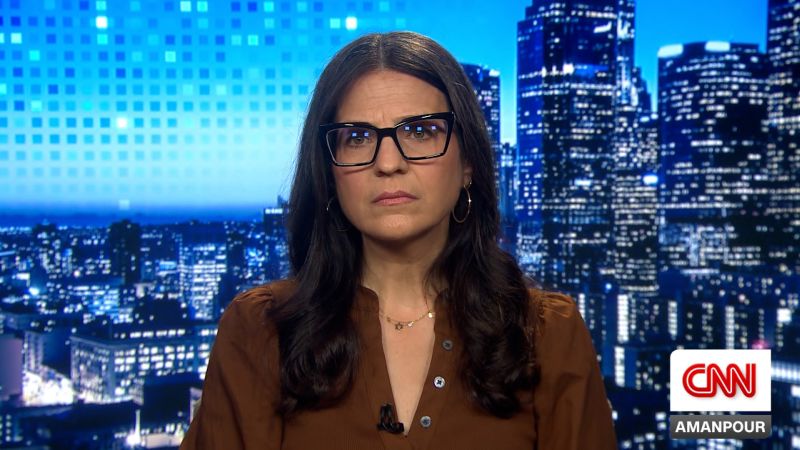In “The Ministry for the Future,” published last year, the science-fiction author Kim Stanley Robinson imagines a course by which the world might arrive at a new sort of utopia, on the other side of the climate crisis: a “good Anthropocene.” It’s a hard road, and many dystopias are glimpsed along the way. The novel opens in a town in Uttar Pradesh, in northern India, as it is hit by a “wet-bulb” heat wave, in which high temperatures and humidity combine in a manner that makes it impossible for bodies to cool without air-conditioning. Then the power grid collapses. Twenty million people in the region die, including nearly every inhabitant of the town.
The scene is dreadful and vividly described, yet it stirred me less than what happens next: India abandons its apathy and half-measures, and becomes the first large country to truly revolutionize in order to meet the demands of the climate crisis. “Time for the long post-colonial subalternity to end,” Robinson writes. “Time for India to step onto the world stage, as it had at the start of history, and demand a better world. And then help to make it real.” A national workforce sets about refurbishing the national grid and building wind, solar, and free-river-hydroelectric plants to replace coal-burning stations. In the next five hundred pages, the country leads the world by example in the defining challenge of the twenty-first century.
To describe this radical climate praxis, Robinson invokes existing models of decentralized governance and regenerative agriculture from progressive Indian states, such as Kerala and Sikkim. He mentions dozens of real organizations that are making advances in ecosystem restoration, reforestation, income generation, and water harvesting. The book does not advocate policy. Rather, it gestures at a wide horizon of local ideas and expertise. In an e-mail, Robinson told me that he has not spent time in India, but he has in the Nepali Terai, a region that borders the hot, crowded state of Uttar Pradesh. He said he was “very concerned to write a version of India into our near future that is positive and powerful.”
Growing up in Bangalore, in the nineteen-nineties, I learned to think of India, for all its sins and failures, as a country that the world admired and even looked to for enlightened moral and political alternatives. The past decade has largely buried that reputation, under headlines about corruption, demagoguery, and hate crimes. “The Ministry for the Future” taps a vein of national identity that has receded but not disappeared: India as a society ready to redeem a broken model of modernity.
After all, it did so once before. The country helped lead the globe through what was, for most of the world’s people, the defining challenge of the twentieth century: decolonization and democratic self-rule. This year, India kicked off its celebration of the seventy-fifth anniversary of independence from the British Empire, which formally took place on August 15, 1947. With that transition, the number of people with suffrage nearly doubled worldwide. Not only did India lay a claim on democracy, the vaunted reserve of imperial rulers; it aimed to outdo them at it. From the first independent election, in 1951-52, every citizen over the age of twenty-one could vote. The lowest castes, formerly known as the “untouchables,” were guaranteed representation in Parliament.
It’s hard now to grasp how audacious India’s gambit was. Skeptics, even among the country’s allies, were everywhere. Chester Bowles, the American Ambassador to India, expressed a typical sentiment, writing, in his memoir “Ambassador’s Report,” that he was “appalled at the prospect of a poll of 200 million eligible voters, most of whom were illiterate villagers.” He anticipated “a fiasco,” but what he observed changed his view of whom democracy was for. “I have seen women defy old customs and cast their first vote. . . . I have seen ‘untouchables’ walk for miles to stand in the voting line next to Brahmans.” He concluded, “In Asia, as in America, I know no grander vision than this, government by the consent of the governed.”
India’s transition from colony to sovereign democracy encouraged a wave of decolonization and democratic experiments across Asia and Africa. “When the time came for me to do something about gaining the political independence of my own country,” Kwame Nkrumah wrote about Ghana, ten years later, “it was a natural thing that I should take inspiration from India and her leaders.”
The leaders of the independence movement left political and ethical legacies that could also help shape a climate revolution. Gandhi, from the time of his first published book, developed his argument against British rule through a critique of industrial civilization, its “indefinite multiplicity of wants,” and its relentless hunt for new lands, resources, and people to exploit. Gandhi’s corollary, swarāj, referred not just to political self-rule but also to decentralized, self-sufficient ways of living. (His belief in the Indian village as a scene of potential swarāj was fraught—it was also a scene of caste and gender violence, as one of his critics, Bhimrao Ramji Ambedkar, pointed out.)
Yet Gandhi was prescient about the pathways of industrial growth. “God forbid that India should ever take to industrialization after the manner of the West,” he wrote in 1928, in his paper “Young India.” “If an entire nation of 300 million took to similar economic exploitation, it would strip the world bare like locusts.” Gandhi’s writings are still a touchstone for natural farmers and organic initiatives across India; Robinson name-checks many of them in “The Ministry for the Future.” A 2019 editorial in the journal Nature concluded that “Gandhi’s commitment to what we now call sustainability is perhaps more relevant today than in his own time.”
Ambedkar was born into an “untouchable” caste, but he became a founding jurist of the Republic of India. As a ferocious critic of Gandhi on the issue of caste, and as the chief draftsman of India’s Constitution, he made sure that the country’s struggle against foreign exploitation and empire did not legitimize exploitation inherent in Indian society. Ambedkar’s influence is rising among young Indians, and his analyses of social power and eye for the hypocrisies of crusading élites are as critical for the climate movement as they were for India’s independence movement, which was steered mostly by upper-caste men.
Another spur to India’s climate transition is the legacy left by its first Prime Minister, Jawaharlal Nehru. His progressive, internationalist outlook extended beyond the dismantling of empire, and was proactive about the new perils faced by the world at large. I was reminded of this while reading about Bertrand Russell and Albert Einstein’s manifesto of 1955, signed by the world’s leading atomic scientists—a landmark ethical renegotiation of war in light of the nuclear bomb. It also called for an international conference of scientists to confront this existential threat to the human species. While Russell was drafting the text, Nehru wrote to him offering to host the conference in New Delhi. Russell agreed, but that plan was derailed by the Suez Crisis; the event moved to Nova Scotia, giving rise to the Nobel Prize-winning Pugwash Conferences.
These legacies still have vast subscription among Indians today, and the power to persuade hundreds of millions. Alongside them is India’s ecological heritage, with roots in both peasant traditions—such as Chipko, the original and literal tree-hugging protests to save forests in the Himalayan foothills—and tribal cultures, which defend hills and streams against extractive mining in central India.






More News
What Sleepy Trump Dreams About At Trial
Arrow Retriever
‘Jerrod Carmichael Reality Show’ exploits pain for good : Pop Culture Happy Hour